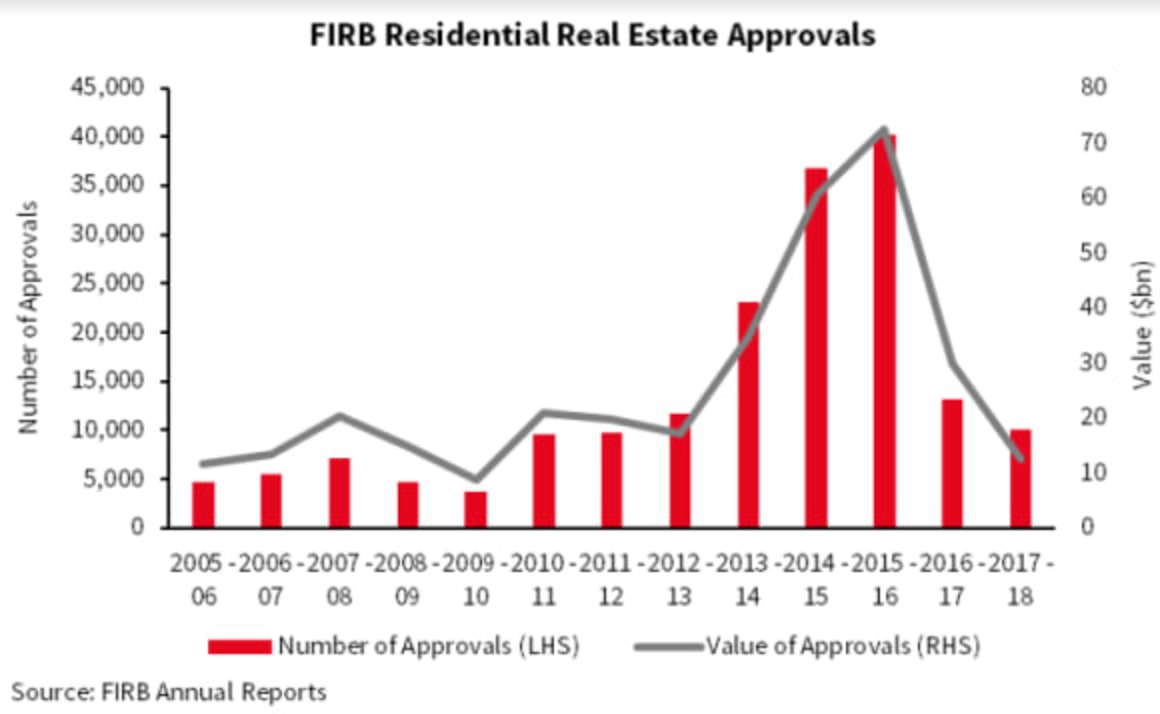Number of apartments being marketed falls 48% in a year: JLL

Lower investor demand is being reflected in a shrinking apartment pipeline, according to a new report from JLL.
According to JLL’s latest 1Q 2019 Apartment Market Reports, the number of apartments under construction in Australia’s six major capital cities has fallen by around 10% over the past year.
The number of apartments being marketed has fallen by a massive 48% over the same period.
Melbourne’s construction numbers held strong with 18,540 apartments under construction, up 15% from a year ago.
However, the number of apartments being marketed in Melbourne fell by 51% over the past year (1Q 2018 – 1Q 2019).
Sydney has seen a 24% fall in construction over the past year and a massive 77% reduction in apartments marketed, while Brisbane experienced a 36% reduction in construction and 59% reduction in apartments marketed.

These trends are a result of several factors influencing local market conditions, said Leigh Warner, JLL’s Head of Residential Research - Australia.
“The decline in the supply pipeline that has been happening for some time now very clearly illustrates how the pre-sales requirements put on developers by financiers in Australia makes our supply pipeline very responsive to prevailing demand conditions,” said Warner.
“We’ve seen quite a few projects that we’ve been tracking for some time be redesigned for other land uses including office, hotels and student accommodation by existing or new owners.
“This has particularly been the case in Melbourne.
“The medium-term danger now is clearly that it will take some time for the supply pipeline to get going again and, with still very strong levels of national population growth, we could quite easily move into supply shortages over the next few years at the national level.
“This could result in real pressure on renters in some parts of the country in particular and move us from a housing price affordability crisis into a rental affordability crisis if we are not careful.”

With the exception of first home buyers, most buyer groups have been very inactive over the past few years, the JLL report said.
APRA’s macro prudential measures have been the major cause of slow investor credit growth, said Warner.
“The fall in overseas demand cannot really be attributed to any one thing,” said Warner.
“State and Federal imposts on foreign investors and credit constraints definitively contributed to the decline, but changes to Chinese capital restrictions likely had a much larger impact.
“And the late stage of the cycle and better opportunities elsewhere also likely played a role.”
With investors largely sitting out, developers are changing schemes to better target owner occupiers, the report found.
“In 1Q19 there was an increase in planning submissions lodged, reflecting both lapsed approvals being resubmitted and developers changing schemes to better suit current demand trends and more specifically target owner occupiers with smaller projects, larger apartments and higher quality finishes,” said Warner.
JLL expects conditions to remain tough in the short-term, with many parts of the country to see further downward pressure on prices and rents before starting to stabilise in late-2019.
“The combination of still tight credit, the Federal election and buyers holding off to see where prices will settle in some markets will all remain headwinds in the short-term,” said Warner.
“However, we think the medium-term outlook is very different.
“We have not significant over-built in aggregate and very low completions over the next few years, along with continued strong population growth, will see us quickly move into an under-provision of space and see rental markets tighten once more.
“The timing of this recovery will differ across the country, but it is likely to be the resource markets of Brisbane and Perth that lead the next cycle as economic and population growth continue to improve in these markets.
“The excesses of the booms in Sydney and Melbourne mean these markets will take longer for price growth to return, but lower investor activity could mean the turnaround in the rental market in these cities could be much quicker.”